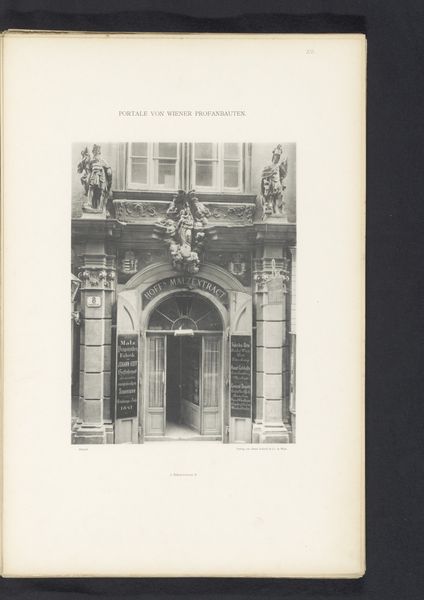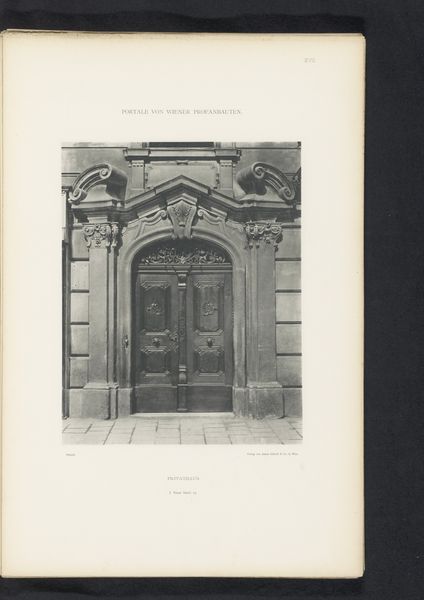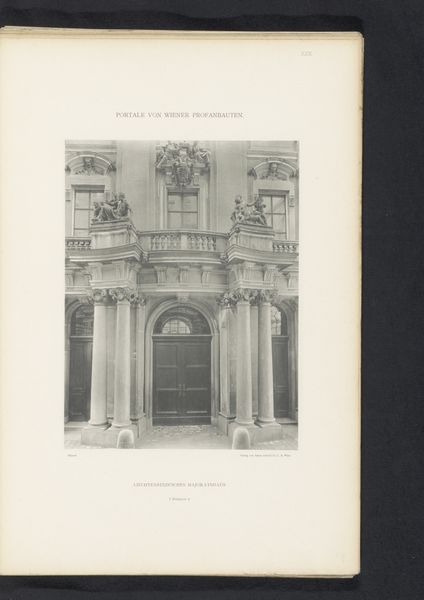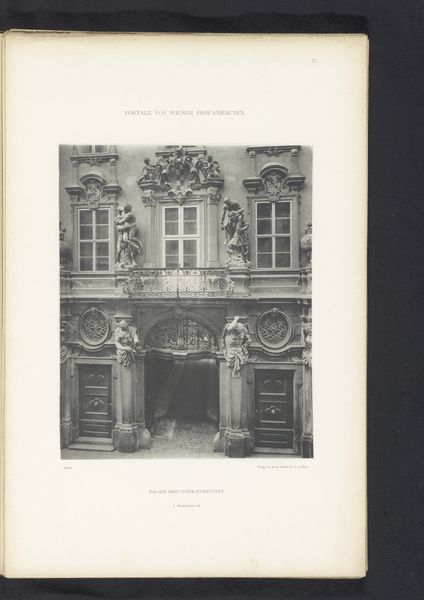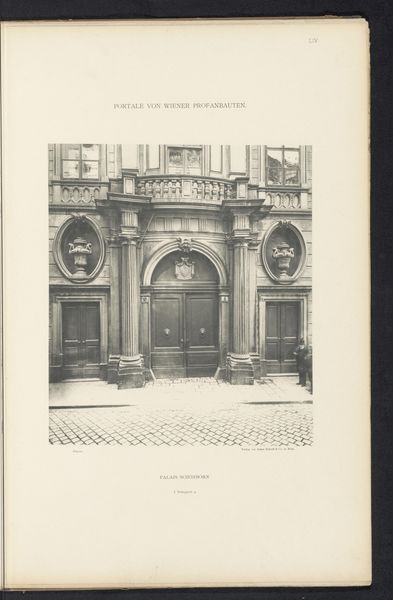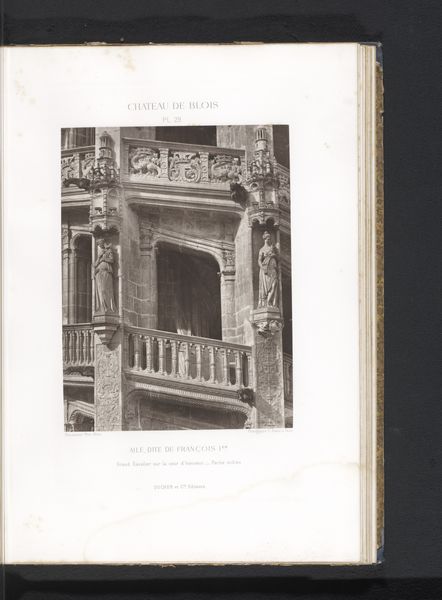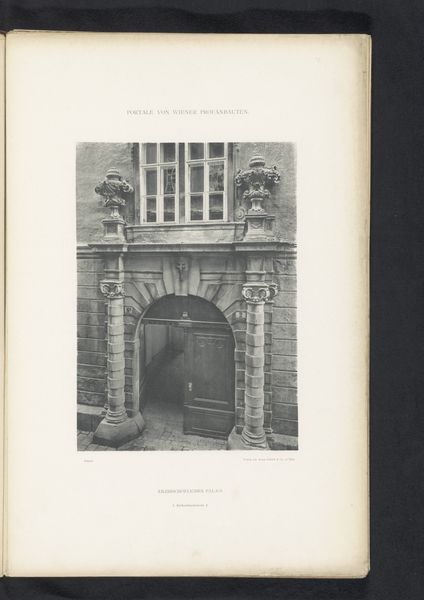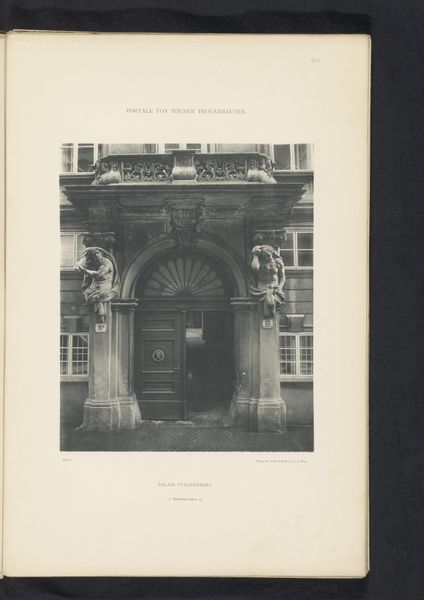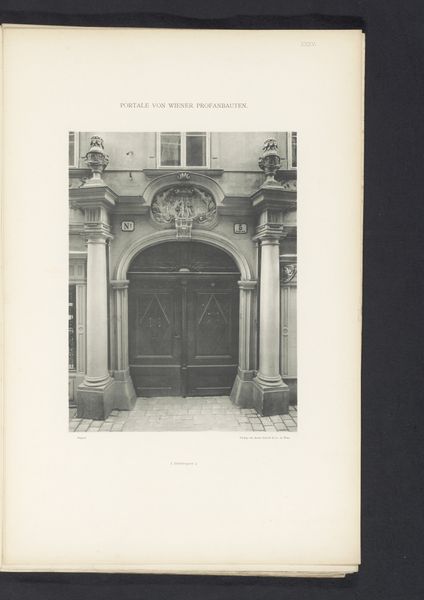
Dimensions: height 279 mm, width 219 mm
Copyright: Rijks Museum: Open Domain
Curator: This print, made before 1894 by an anonymous artist, depicts the entrance portal of the Ministry of Finance in Vienna. It’s rendered in ink, possibly with photography incorporated into the process. Editor: The immediate feeling is of impenetrable grandeur. The shadowed entrance framed by classical ornamentation evokes a sense of power, of course, but also secrets. Curator: Let’s examine the portal’s composition. Note how the artist utilizes symmetry to convey a sense of order and stability, quintessential elements of Neoclassical architecture and governmental representation. Editor: And the carvings! Look closely— there are figures flanking the entranceway; they remind me of ancient Roman deities, likely personifications of virtues like prudence or justice, the sorts of attributes a finance ministry would wish to project. Also note the lamps on either side of the entrance and the sculptures on the higher facade that resemble vases filled with...are those flames? It evokes vigilance and awareness. Curator: Indeed. The high degree of contrast – the stark shadows within the doorway against the sunlit facade – serves to further accentuate the portal's imposing presence. Editor: The arched doorway itself is interesting too. It presents a sense of accessibility while at the same time visually implying a certain selectivity to access the space. Perhaps implying the difficulties to access such institution. Curator: We should also note the balcony, itself decorated with classical motifs, suggests further layers of administrative function and hierarchy. This reinforces the notion of bureaucratic structure inherent to the building's purpose. Editor: What resonates is the enduring use of classical symbols to legitimize power. It’s fascinating to see how these visual languages evolve, or, in this case, are consciously revived and re-deployed to project authority across generations. Curator: Yes, through formal composition and deployment of Neoclassical vocabulary, the artwork communicates not just the facade of a building, but the visual embodiment of state power. Editor: It certainly leaves one pondering the ever-present relationship between architecture and the stories societies wish to tell about themselves.
Comments
No comments
Be the first to comment and join the conversation on the ultimate creative platform.


